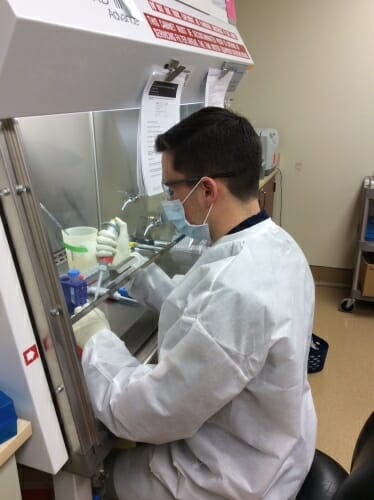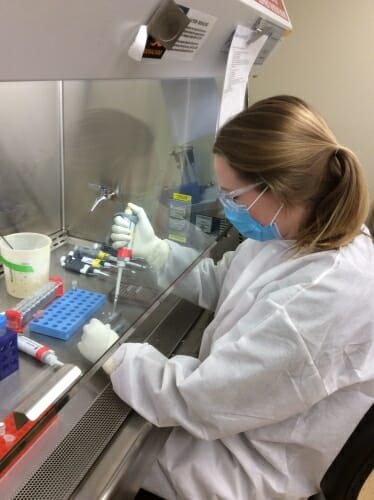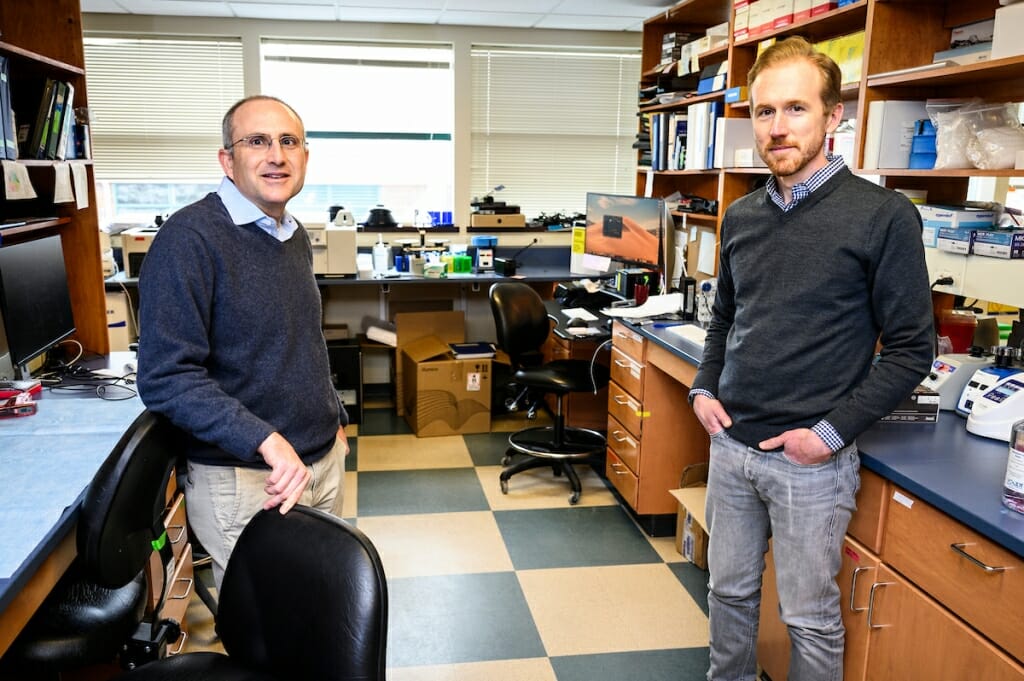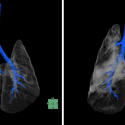Tracking virus mutations reveals success of stay-at-home orders
A family tree of more than 200 variations in the virus that causes COVID-19 helps explain why two Wisconsin counties — just 75 miles apart, but far from the origins of the virus — had such different early experiences with the pandemic, and shows how well public health orders initially slowed the rate of infection.
By the end of April, Dane County had counted 405 coronavirus infections and 19 deaths. Milwaukee County, with less than twice as many residents, had more than six times the infections (2,629) and 126 deaths.
But there was little meaningful viral transmission between the two counties, according to an analysis of the genome sequences of virus samples collected from infected patients in Dane and Milwaukee counties published today by University of Wisconsin–Madison researchers in the journal Nature Communications.
“These two communities, that are very close together and share a lot of cultural, political and economic ties, nonetheless had pretty different strains of virus circulating in them,” says Thomas Friedrich, professor in the UW School of Veterinary Medicine and an author of the new study. “That suggests that the stay-at-home orders, the sheltering in place and the non-pharmaceutical interventions that we put in place at that time were effective in preventing mixing of viral lineages. They kept the two separate.”

UW–Madison graduate student Gage Moreno processes samples from COVID-19 patients. Courtesy of Gage Moreno
By tracking slight mutations in the virus’s genetic sequences, the researchers know the earliest introductions of the virus to Milwaukee County came from Asia and began spreading between locals, according to graduate student Gage Moreno, a coauthor of the study. Dane, on the other hand, got its viral visitors largely from Europe, and in a greater number of distinct variations.
But, despite more opportunities to jump-start community transmission, Dane County managed to avoid Milwaukee’s fate. In fact, Dane County had the 12th COVID-19 case in the U.S., which arrived with a traveler from China on Jan. 30, but didn’t spread to anyone else.
“Despite the variations, the biology of the virus is probably pretty much the same in Dane and Milwaukee counties,” Friedrich says. “There’s no suggestion that any of these mutations changed the transmissibility of the virus, for example.”
That points to other factors, and the most likely are the demographic and socioeconomic differences between Milwaukee and Dane counties. Milwaukee County’s population lives closer together, has a lower average income, is less likely to have access to health care, and is more likely to have medical conditions like obesity and diabetes — all of which could make people more susceptible to COVID-19 infection and more serious outcomes.
“We couldn’t test a specific link between the social or demographic factors and our data, but we see a strong correlation,” says Katarina Braun, a graduate student in Friedrich’s lab and coauthor of the study. “There’s lots of other literature showing that these human factors are as important, even more important, than viral factors in predicting the spread of this virus.”

UW–Madison graduate student Katarina Braun sequenced the genome of more than 200 variations on the SARS-CoV2 virus. Courtesy of Gage Moreno
Human factors shifted in late March when the Wisconsin Department of Health Services’ “Safer at Home” order closed nonessential businesses and prohibited gatherings. By tracking the spread of different variations of the virus after the order was enacted, the researchers can tell how well it arrested spread by estimating the virus’s basic reproduction number, the number of new cases expected to arise from a single infected person.
“In Dane County, that number dropped by at least 40 percent, and in Milwaukee County closer to 70 percent,” says Kasen Riemersma, a postdoctoral researcher in Friedrich’s lab and a coauthor of the study, which also included contributors from Emory University, the Milwaukee Health Department, and Middleton Memorial Veterans Hospital in Madison.
The fine detail on viral transmission — the flow of virus from one place or group of people to another, the way it reacts to changes in policy and people’s habits — that can be gleaned from collecting genetic sequences from virus samples can be very useful to public health officials.
“When we have a small outbreak in Dane County, and we have a library of good sequencing coverage from around the state, you could ask the question: Are these sequences in Dane County most similar to those that are in Sauk County or Door County, or the Dells?” says David O’Connor, professor at the UW School of Medicine and Public Health and another study coauthor. “Then you can focus on the right source when trying to intervene.”

Researchers David O’Connor, left, and Thomas Friedrich are pictured in a lab at UW–Madison on March 18, 2020. Photo: Jeff Miller
The researchers are now building sequencing libraries to help measure the impact infections among college students may have had on communities outside their campuses and whether cases among hospital staff come from their patients or their private lives.
“Everyone should wear masks and everyone should avoid gatherings. Everyone should take these precautions,” Friedrich says. “But to target interventions, to really dig into what’s happening on different levels of infection, sequencing provides the data that supports that. We’d really like to see this become a routine part of outbreak investigations.”
This research was supported by grants from the National Institutes of Health (F30 AI145182-01A1 and NLM 5T15LM007359) and the Wisconsin Partnership Program and Wisconsin National Primate Research Center.



